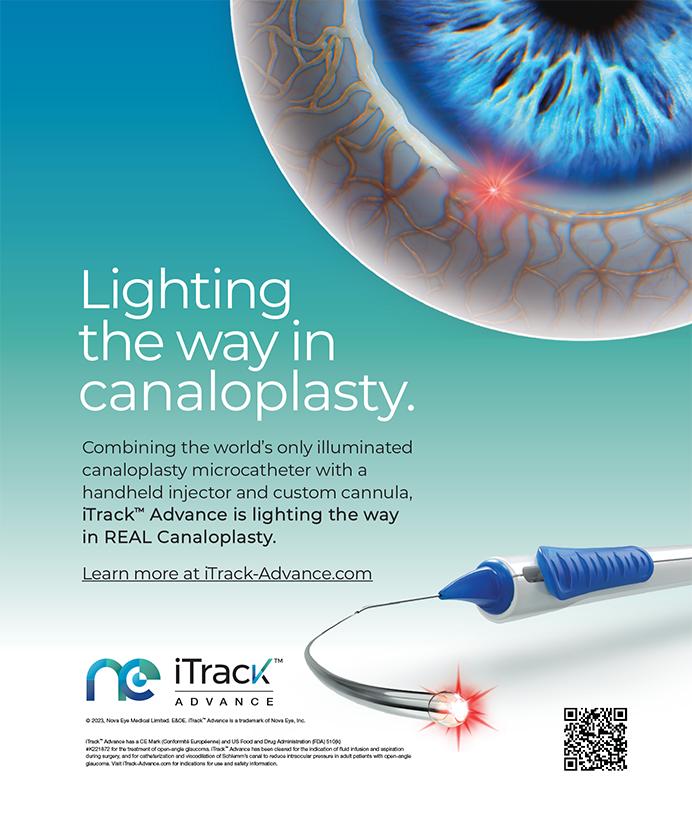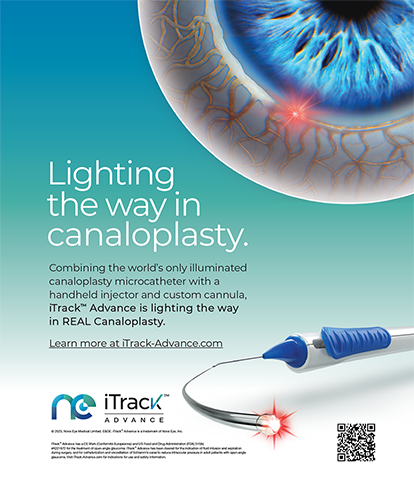Functional vision is a topic that we ophthalmologists have paid little attention to in the past. Thanks to newly available multifocal and accommodative lens implants, we are becoming more aware that 20/20 vision is less important than functional vision. It is essential to differentiate each of the three approved multifocal implants, because they all have strengths and weaknesses. All three may not serve a given individual's goals or needs.
The mixing and matching of the available multifocal IOLs is a relatively new concept and may blend the features of two different implants to give a patient functional reading, intermediate, and distance vision. Although combining different implants is not a perfect solution to all visual needs, it is a step forward in this ongoing, adaptive process.
WHAT IS FUNCTIONAL VISION?
Functional vision is the ability to see clearly while performing daily activities in varying levels of light at near, intermediate distance, and distance. There are certain parameters that should be taken into account when measuring a patient's functional vision such as (1) day- and nighttime driving, (2) the ability to read in photopic or mesopic light, and (3) contrast sensitivity. In the past, we assumed that patients who saw 20/20 on the Snellen chart after cataract surgery had functional vision. We now know that the quality of vision is not determined by Snellen acuity. Successful IOL implantation depends on patient selection and matching each lens with the patient's needs and goals.
COMBINING TECHNOLOGIES
In the US there are presently three pseudophakic IOLs that are approved: the accommodative Crystalens (Eyeonics, Inc., Aliso Viejo, CA), the defractive/refractive Acrysof Restor (Alcon Laboratories, Inc., Fort Worth, TX), and the refractive pseudophakic Rezoom IOL (Advanced Medical Optics, Inc., Santa Ana, CA).
As an ophthalmologist, I have found that patients with binocular multifocal implants see better than those having only one of the lenses. A recipient of the Acrysof Restor implant typically reads at a distance of 25 to 30mm. This short focal length is due to the 4.00D near add but may be longer with a binocular system. In bright light and at the aforementioned close distance one can usually see clearer than with the other available lenses. Intermediate vision is not good since we are also dealing with a refractive, bifocal implant. In my experience, the lens does not function well in mesopic light, has starbursts, and provides poor contrast sensitivity.
The Rezoom lens has a longer focal distance with a 3.50D add and allows the patient to read at a distance of 37 to 40mm. Intermediate vision is of high quality, and one can read in mesopic light (as in restaurant lighting). However, the Rezoom lens can reduce near vision in bright light with small pupils because the lens is distance weighted. Contrast sensitivity is good, and the fan shaped halos with the Rezoom lens are not too disturbing. In my opinion, the distance vision achieved with the Crystalens, the Acrysof Restor and the Rezoom IOL is decent.
The Crystalens is not dependent on pupillary size, so lighting is not an issue. After talking with ophthalmologists about this lens, however, it was concluded that some patients seem to become fatigued with reading after an extended period of time in low lighting. For the most part, accommodation and reading ability are good at functional levels. Intermediate vision is acceptable. Halos and starbursts commonly associated with pseudoaccommodative IOLs are not a problem with the Crystalens, and contrast sensitivity tends to be the best with this lens.
STAGED IMPLANTATION
Through my personal observation and experience, and that of a number of other ophthalmologists including Alan Aker, MD; Kevin Walz, MD; Richard L. Lindstrom, MD; Frank A. Bucci, Jr, MD; and R. Bruce Wallace, MD, I have found that the mixing and matching of implants can provide blended vision and act as a therapeutic option for some of the potential drawbacks of the first multifocal IOL implanted.
As a result of a steroid-induced cataract, an Acrysof Restor implant was placed in my dominant right eye 2 years ago. I found I could read at 25 to 30mm with this eye but had poor intermediate vision and gross difficulties reading in mesopic light. That eye has disturbing starbursts still present. My depth perception was poor, mainly due to decreased contrast sensitivity. I was functioning fairly well with a cataract and 20/50 vision in my left eye. I did, however, consider explanting the Acrysof Restor lens and having it replaced with a monofocal implant. Because my distance vision could be 20/30- at best in that eye with a correction of -0.75 0.50 X180, and I could read 20/30 at 37mm and 20/40 at intermediate distance with 1.50D readers, I decided to wait on further surgery until another option became available.
Two years later, I chose a Rezoom implant for my left eye in hopes that I would achieve functional blended vision. The night I received the Rezoom implant, I was driving to two meetings and noted improved visual function. Several days later at the annual ASCRS meeting in 2006, I was reading at 37 to 40mm, could see the computer, and attended the lectures without glasses.
As a surgeon and a patient, I was able to compare the starbursts I saw with the Acrysof Restor IOL with the fan-shaped halos seen by my eye with the Rezoom lens. Interestingly, my nondominant left eye (Rezoom), when looking binocularly, takes over from the right eye and eliminates the starbursts. Moreover, my distance vision with the Acrysof Restor eye improved after I received the Rezoom implant. The combination of and Acrysof Restor and Rezoom IOL has addressed my concerns about my initially suboptimal results with the Acrysof Restor implant alone by effectuating functional blended vision.
CONCLUSION
Multifocal or accommodative IOLs are not for all patients. My experience does not indicate that the Rezoom IOL is a cure-all for every patient. In my case, the IOL served as a therapeutic option for my troubles with the first implant. Pre- and postoperative counseling and measurements are essential to customize vision for each patient.
Functional vision can make patients happy, but personal parameters must be evaluated before surgery. Patients can either be ecstatic or very unhappy–what I like to call refractive purgatory. We need to design methods to evaluate comfortable speed-reading parameters with these lenses and a consistent standard for measuring contrast sensitivity.In my opinion, mixing and matching IOL technologies will become more prevalent in the future in order to satisfy patients' needs and demands for functionality of vision.
Charles H. Bechert II, MD, FACS, is Former Director of the Sight Foundation in Fort Lauderdale, Florida. He acknowledged no financial interest in any products or companies mentioned herein. Dr. Bechert may be reached at (954) 785-6414; chbskip@aol.com.


